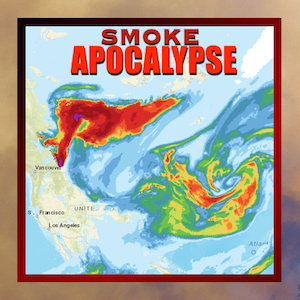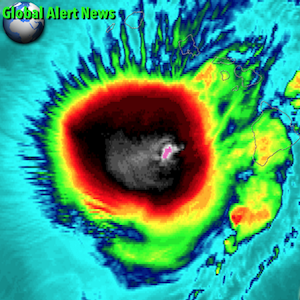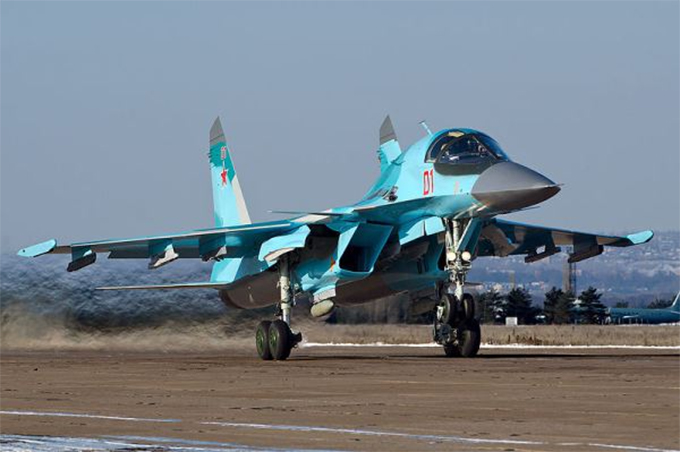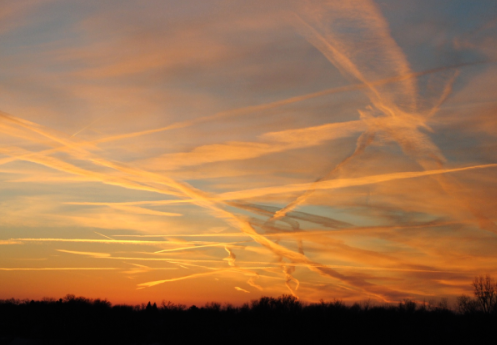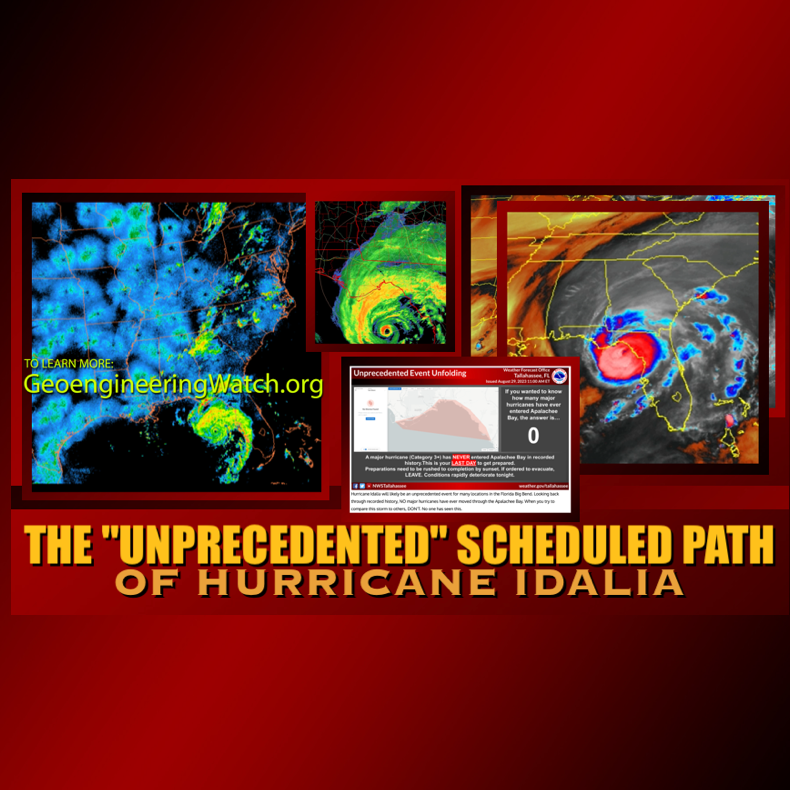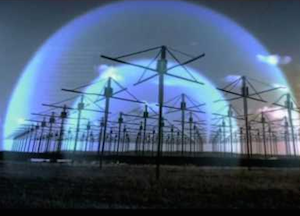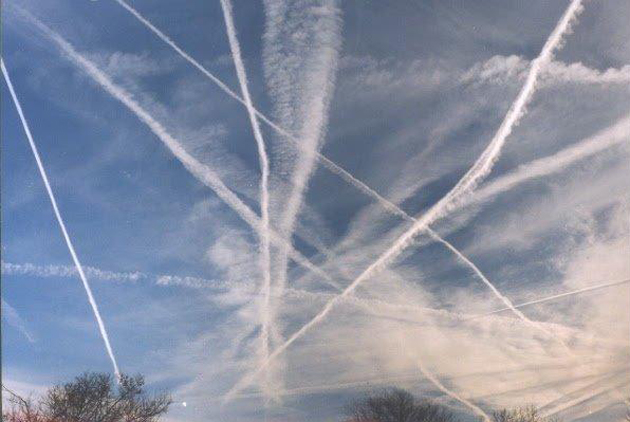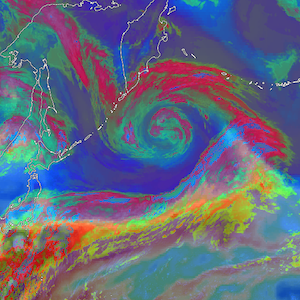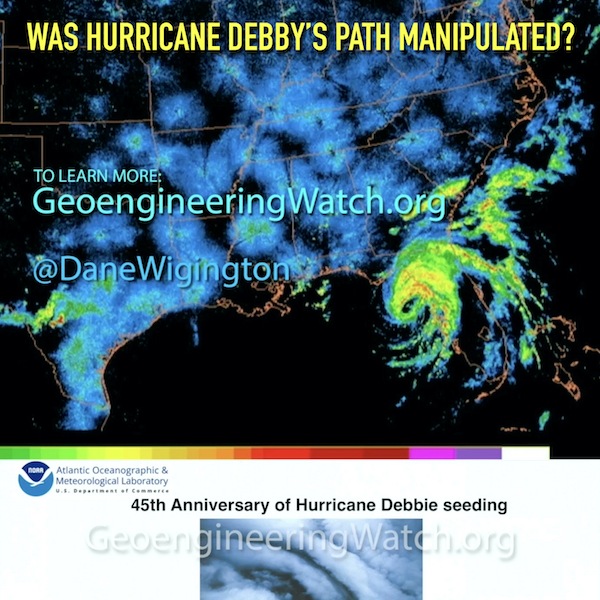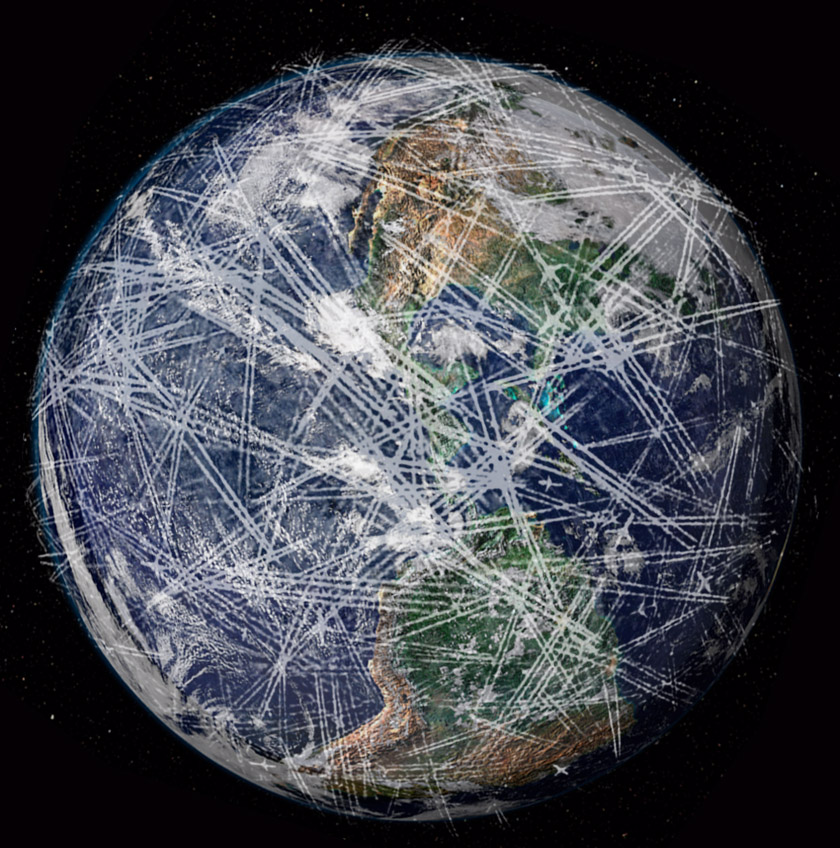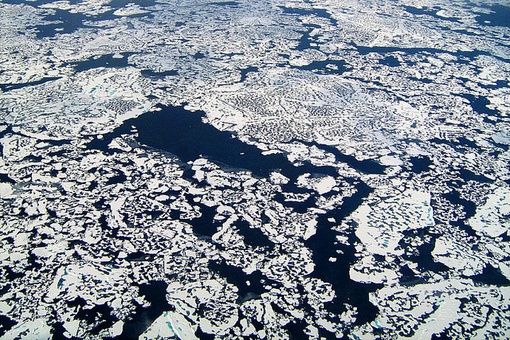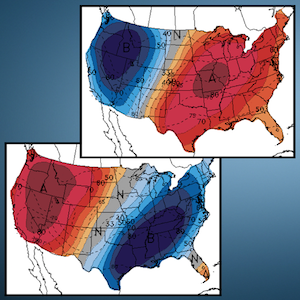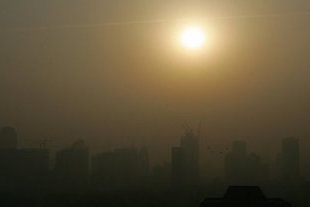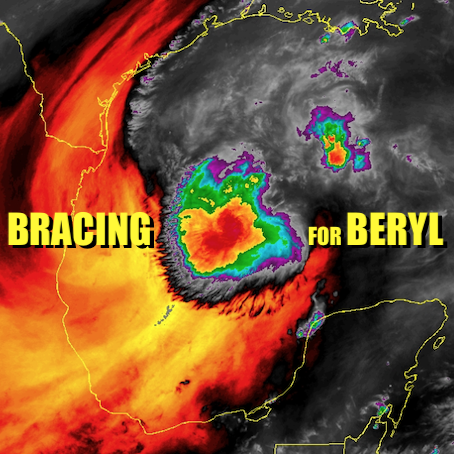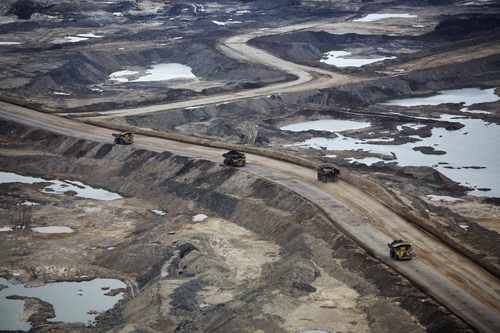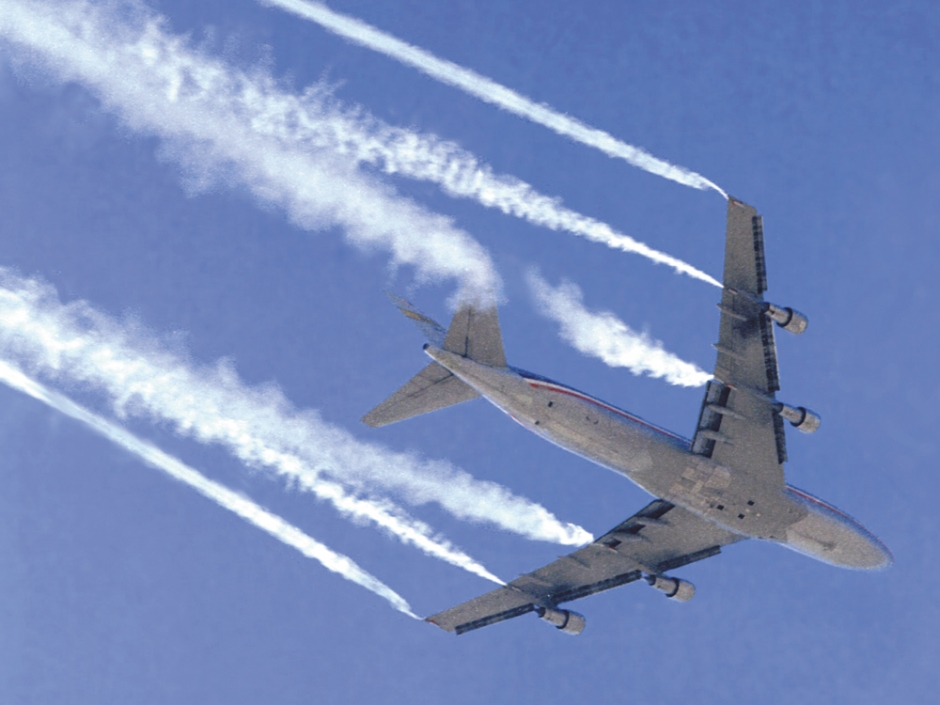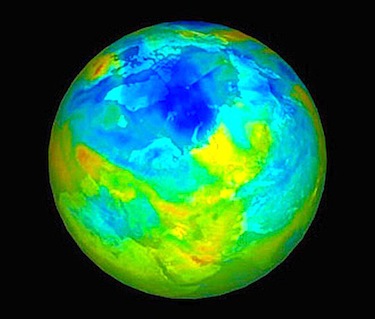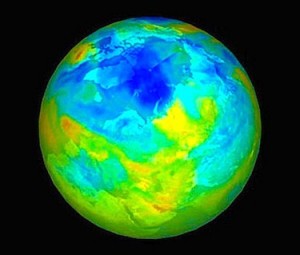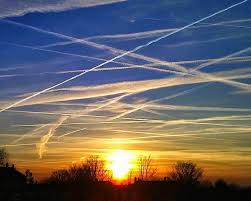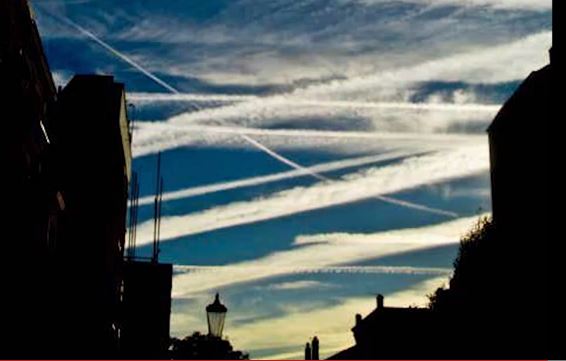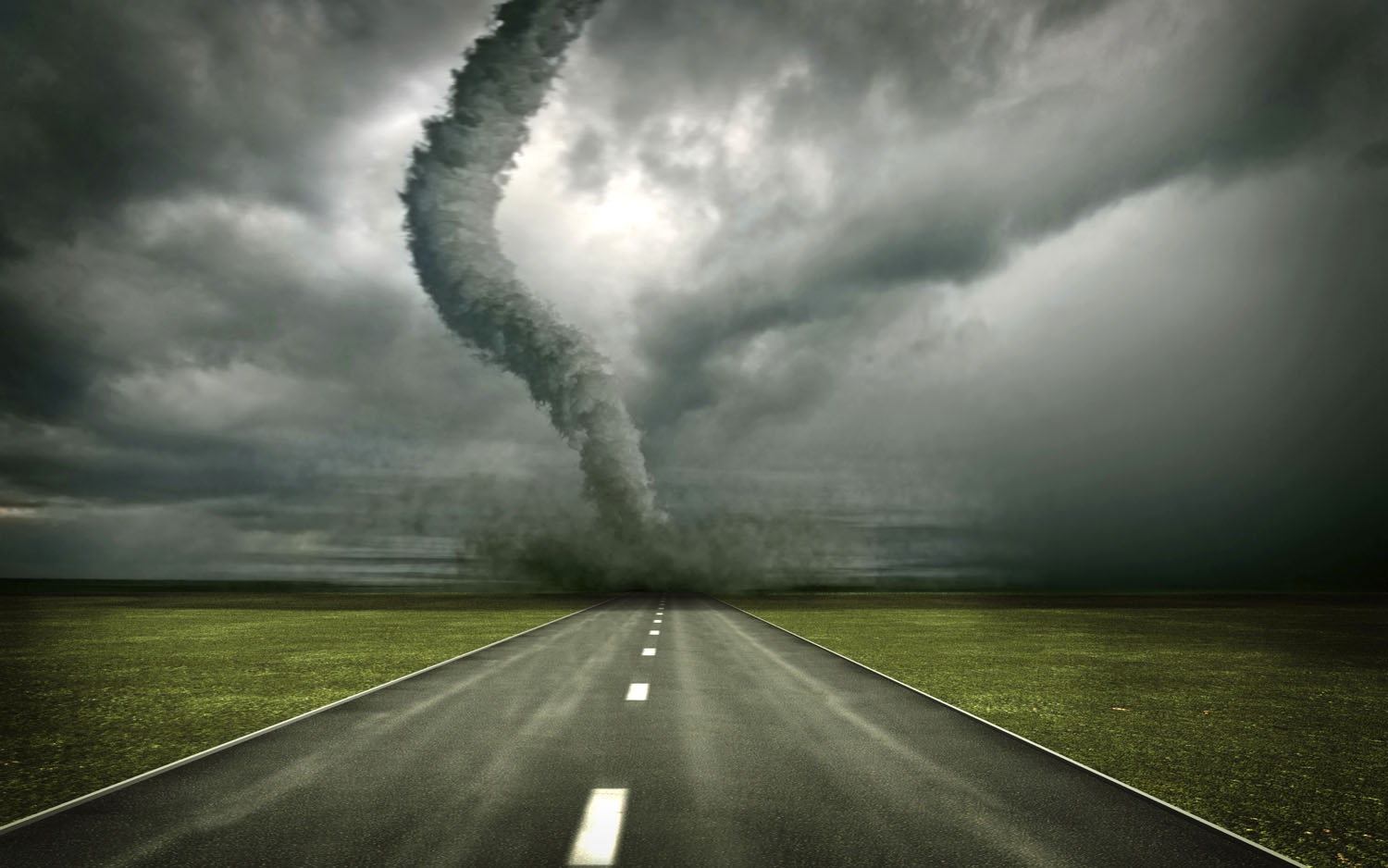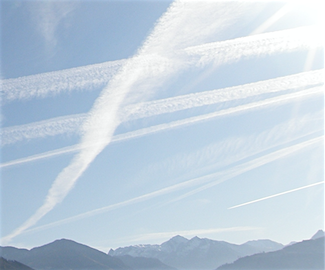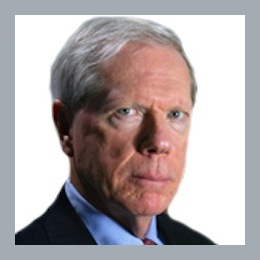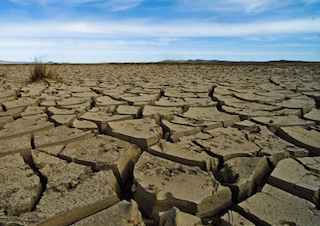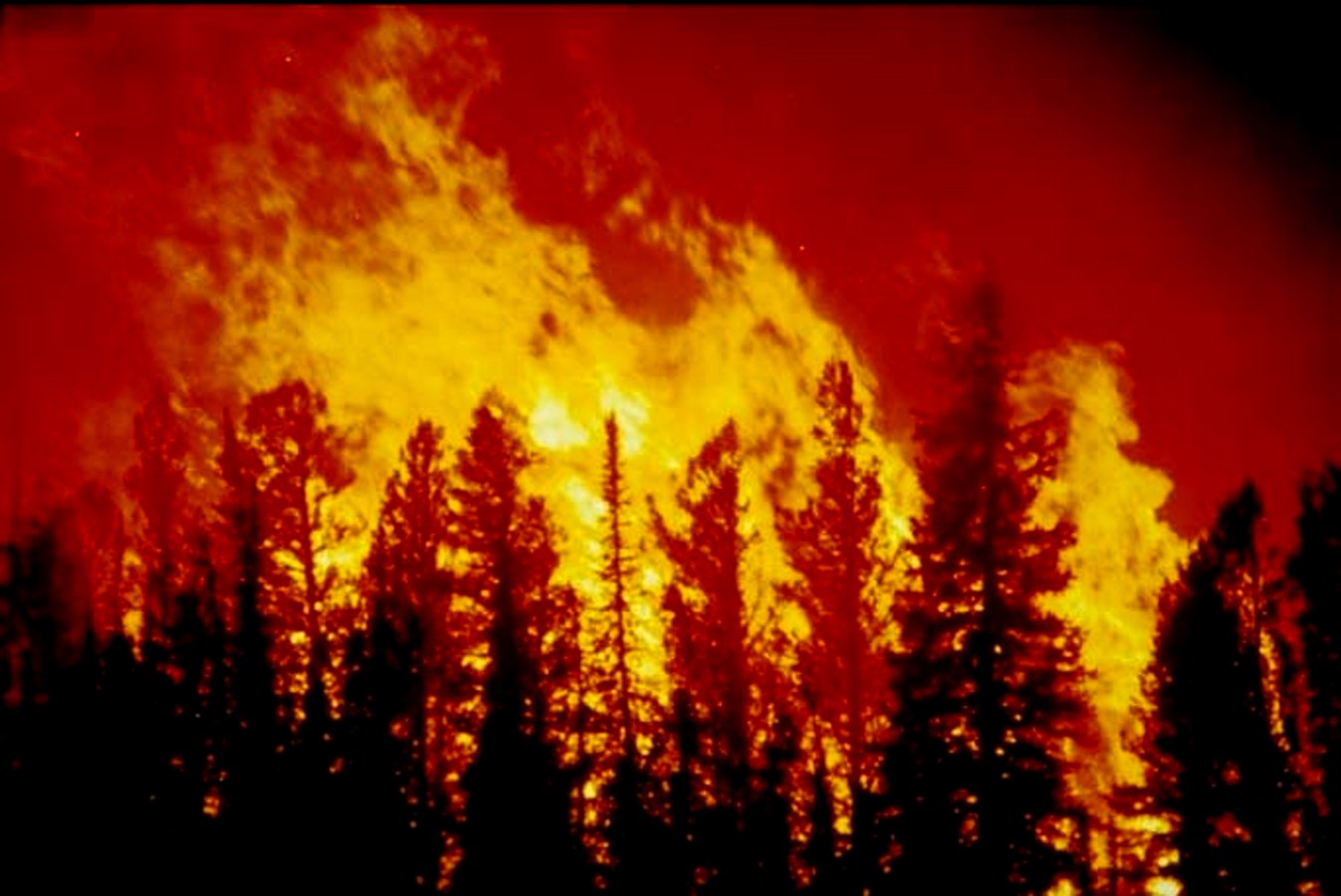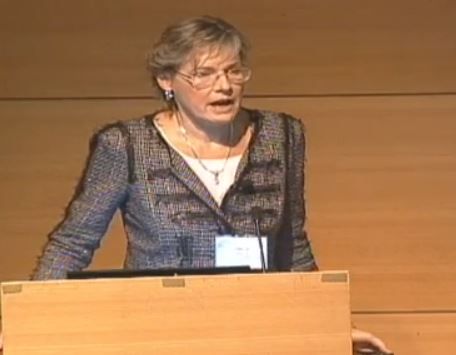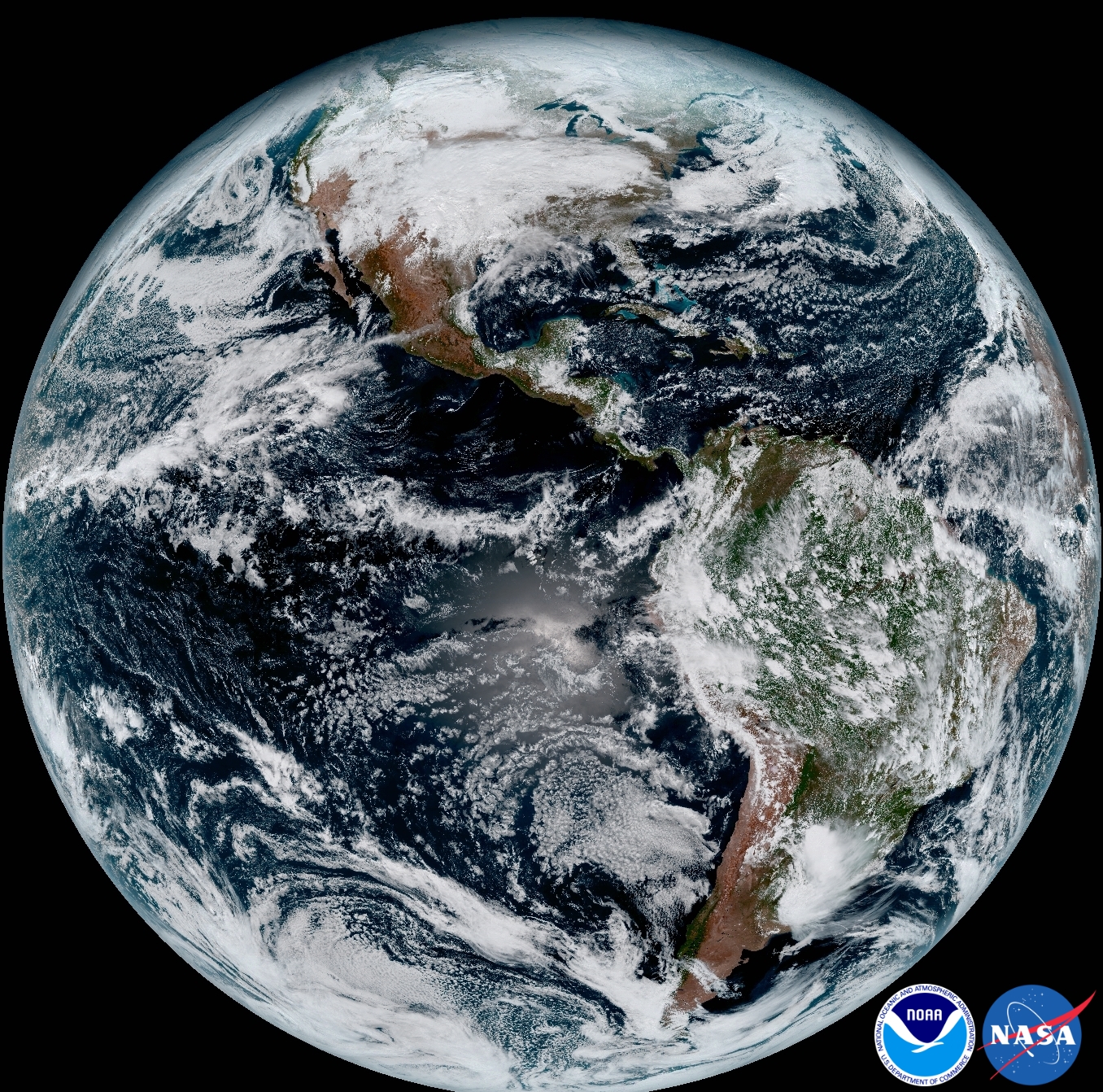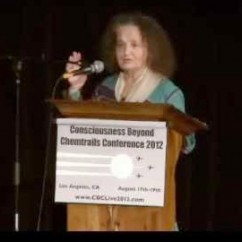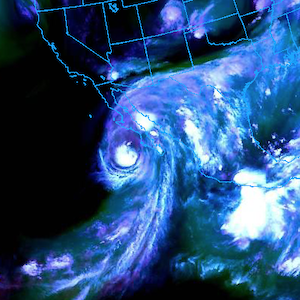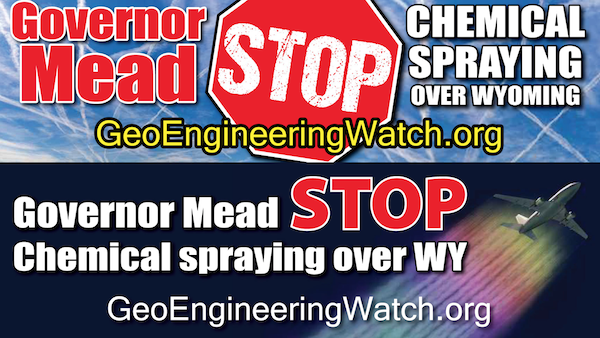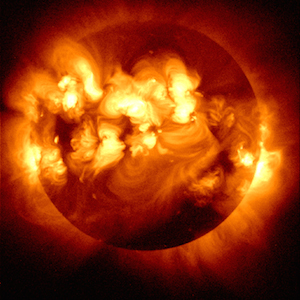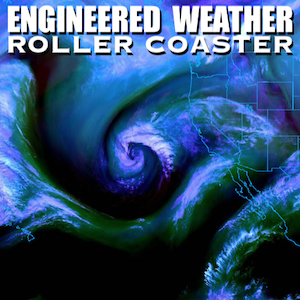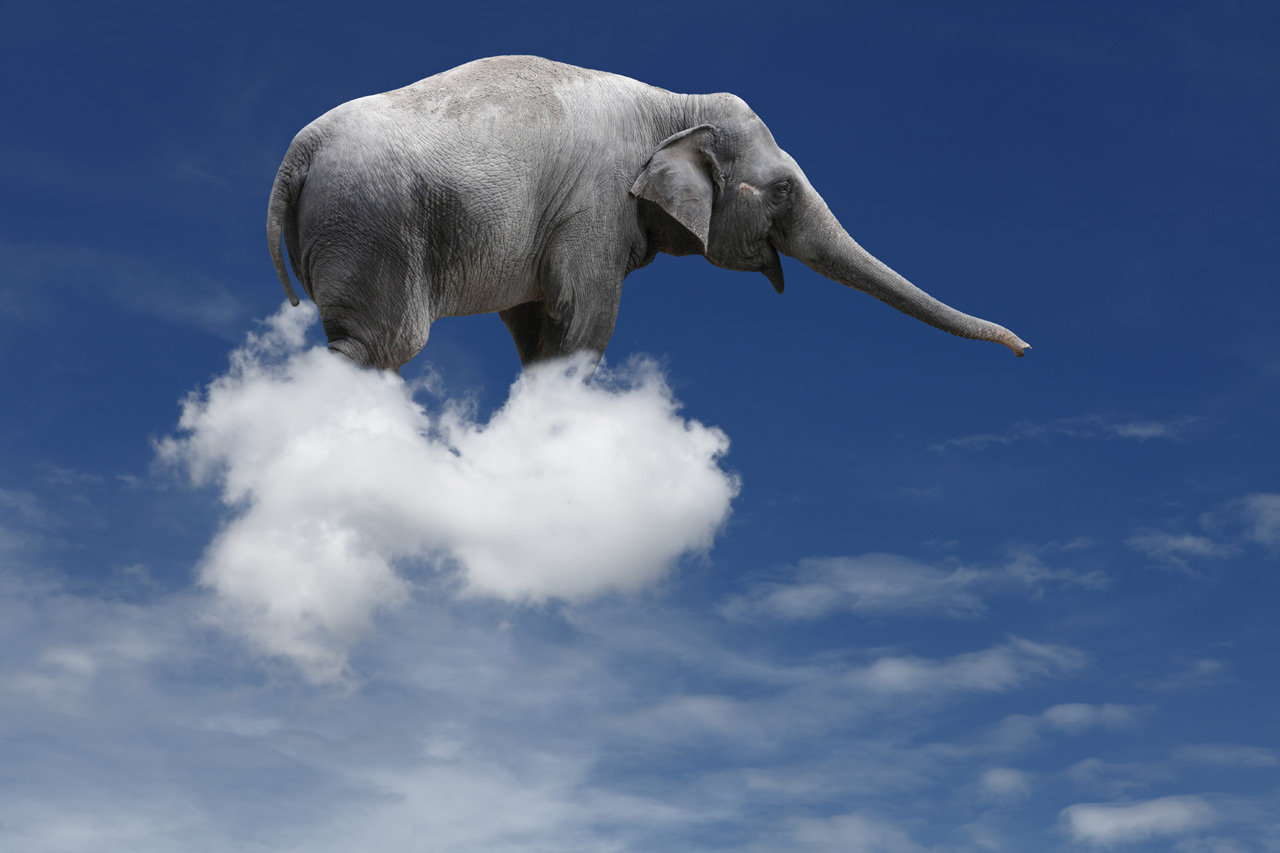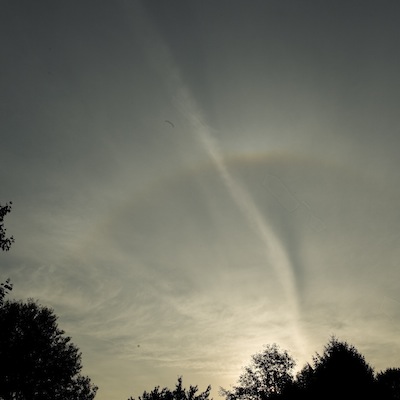Again it seems appropriate to wonder what will it take for the gravity of the aerosol spraying to be realized by a larger percentage of the population. What it will take to compel more people to make the spray issue a priority. What it will take to prompt more to take action in order to bring this most dire issue out into the light?
Each and every day the global assault on our planet, and all that lives and breaths, continues. The decimation being caused by the “SAG” (stratospheric aerosol geoengineering) programs can never be quantified. Though the article below, and others like it, do not mention SAG as a causal factor, the mountain of data on the undisputed effects of SAG paint an all too clear conclusion (attached articles).
Particulate clouds (formed from the aircraft spraying) cause ozone destruction. Period (Search “geoengineering aerosols destroy ozone”). Are we to believe that the the extent of recent atmospheric ozone destruction now seen is most likely to be caused by by limited sources of “CFC’s” on the ground? Most of which have now been banned for decades? Or is it exponentially more likely that the clearly visible spraying occurring in our skies and around the globe, by countless aircraft, are the much more likely source?
World recognized geoengineer, David Keith, stated on the record his proposal of achieving an annual goal of 20,000, 000 tons of aluminum to be sprayed by jet aircraft (actual amounts are in all likelihood higher). All scientific study on the atmospheric effect of aerosol clouds makes clear that they shred ozone. Period. The higher the albedo of the aerosol, the more damage they do. (aluminum has 400% higher albedo than sulphur dioxide) This correlation can be seen on the chart in the article below which shows upper atmosphere temperature variations. The large spike upward in the early 90’s are due to the eruptions of Pinatubo and El Chicon. The particulates they expelled into the upper atmosphere were far less reflective than the aluminum oxide discussed in so many geoengineering patents. The very abrupt changes seen on the same chart that occurred in the early 80’s would seem an indicator of early deployment of the aerosol spraying programs. Volumes of data show clearly that many weather modification programs are much older still, going at least back to the late 40’s.
In addition to our atmosphere being literally ripped apart, there is of course the complete poisoning of the entire biosphere from the ongoing spray programs (increasingly well documented by testing from around the globe). The complete disruption of natural weather patterns is also a given at this point. Any study of current satellite imagery shows the planet is largely encased in a “haze” that was not visible in “earth” photos from decades now past. In addition to the “global dimming” (volumes of data can be found under this heading on any search engine), there is the now ever more “usual” above freezing temperature snow events. As mentioned in earlier statements, though such phenomenon is naturally possible to a small degree under unique, rare, and unusual conditions, it is now often the norm. Especially in the fall and spring when such manipulation is much harder to hide due to the overall temperatures in regions of the anomaly being far above freezing. The new “threshold” of temperatures producing snow events is now commonly much farther above freezing than historical rare “above freezing” snow events. As stated in earlier reports, the air temps in the regions experiencing these events eventually cools down,(partially due to the albedo effect of snow) though often only briefly. The descent into the winter months will more effectively hide such manipulation.One must also consider the “HAARP” facility and its probable connection to much of the “freak weather”. Main stream media always explains it all away as the are instructed by those pulling their strings. Just like “Agent Orange” for several decades, and more recently, the Gulf oil spill and Fukushima. In the case of NOAA, Weather Channel, and the National Weather Service, Raytheon is their “puppet-master”.
Ice “nucleation” is a very complex subject . Though many if not most assume water always freezes at 32F, this is way off the mark under many conditions. Current scientific data shows conclusively that pure water can require temperatures as low as -30 c to freeze in containers not conducive to ice nucleation. Ice nucleation can also be induced at temperatures as high as +10 c when particles are present that are effective for ice nucleation (search “ice nucleation for weather modification” or other related headings). Again, this is a complex subject with a great many studies and variables. The bottom line on “artificial ice nucleation” (artificial snow) is this, there are a number of patents on this subject with the expressed goal of inducing snow and we are daily now witness to far above normal temperature snow events around the country and around the globe. Again today there is snow occurring in many parts of the north eastern US at temps in the high 30’s to low and mid 40’s. Are we to think China can achieve this and the US can not? (Search “china produces artificial snow storms”)
The sun feels increasingly hot on your skin because it is is. UV readings in are rising around the globe. The “UV” scale, once “1-10” is now “1-16”. Not many seem to have noticed yet, but that will soon change if our protective layers of the atmosphere continue to be shredded by the spaying. The second article attached below makes clear the effort that is now being undertaken to hide the ozone problem by refusing to let scientists communicate with media. Nearly all current information is controlled. Finding the truth is an ever more difficult endeavor.
At the risk of to many repeated statements from former reports, I will say again that I believe an ever growing mountain of scientific data makes all too clear the lethal consequences of the spraying. Its destructive and toxic fall out is ever more evident around the globe. I further believe that available data also makes clear that it is our greatest and most immediate threat short of nuclear disaster. I continue to hope that all who are aware of this most dire issue will do everything in their power to bring it to light for the masses before our biosphere is damaged beyond any meaningful recovery. I hope that those who have been “sitting the fence” on the direly important issue of the spraying will begin to truly realize its gravity and help in the effort to expose this greatest of all untold crimes in human history.The concerned should take the time to do real investigations on their own. To verify the facts laid out above in regard to SAG ozone destruction, and the complete biosphere toxification from the same. If all pulled together, who knows what good we may yet accomplish. Our “collective futures” are in the balance.
SW
Masters Arctic Ozone Hole Future Nasty Climate Change Surprises
“Unprecedented” Arctic Ozone Hole: Inaction Risks “Future Nasty Climate Change Surprises Far More Serious”
By Joe Romm on Oct 9, 2011 at 6:13 pm
Dr. Jeff Masters: An unprecedented ozone hole opened in the Arctic during 2011, researchers reported this week in the journal Nature…. We know that an 11% increase in UV-B light can cause a 24% decrease in winter wheat yield (Zheng et al., 2003), so this year’s Arctic ozone hole may have caused noticeable reductions in Europe’s winter wheat crop….
It is highly probable that we will see future nasty climate change surprises far more serious than the Arctic ozone hole if we continue on our present business-as-usual approach of emitting huge quantities of greenhouse gases. Humans would be wise to act forcefully to cut emissions of greenhouse gases, as the cost of inaction is highly likely to be far greater than the cost of action.
Left: Ozone in Earth’s stratosphere at an altitude of approximately 12 miles (20 kilometers) in mid-March 2011, near the peak of the 2011 Arctic ozone loss. Right: chlorine monoxide–the primary agent of chemical ozone destruction in the cold polar lower stratosphere–the same day and altitude. Image credit: NASA/JPL-Caltech.
JR: This important finding almost qualifies as an “unknown unknown,” in that this impact was considered unlikely. And if it harms Europe’s winter wheat crop, it could seriously add to the world’s growing food insecurity (see “Global Food Prices Stuck Near Record High Levels and links therein. Meteorologist Dr. Jeff Masters has a great post on this, which I reprint below.
Unprecedented Arctic ozone hole in 2011
by Dr. Jeff Masters
An unprecedented ozone hole opened in the Arctic during 2011, researchers reported this week in the journal Nature. Holes in the Antarctic ozone layer have opened up each spring since the early 1980s, but the Arctic had only shown modest springtime ozone losses in the 5% – 30% range over the past twenty years. But this year, massive ozone destruction of 80% occurred at altitudes of 18 – 20 kilometers in the Arctic during spring, resulting in Earth’s first known case of twin ozone holes, one over each pole.During late March and portions of April, the Arctic ozone hole was positioned over heavily populated areas of Western Europe, allowing large levels of damaging ultraviolet rays to reach the surface. UV-B radiation causes skin damage that can lead to cancer, and has been observed to reduce crop yields in two-thirds of 300 important plant varieties studied (WMO, 2002.) The total loss of ozone in a column from the surface to the top of the atmosphere reached 40% during the peak of this year’s Arctic ozone hole. Since each 1% drop in ozone levels results in about 1% more UV-B reaching Earth’s surface (WMO, 2002), UV-B levels reaching the surface likely increased by 40% at the height of this year’s hole. We know that an 11% increase in UV-B light can cause a 24% decrease in winter wheat yield (Zheng et al., 2003), so this year’s Arctic ozone hole may have caused noticeable reductions in Europe’s winter wheat crop.
What caused this year’s unprecedented Arctic ozone hole?
Earth’s ozone holes are due to the presence of human-emitted CFC gases in the stratosphere. The ozone destruction process is greatly accelerated when the atmosphere is cold enough to make clouds in the stratosphere. These polar stratospheric clouds (PSCs) act like ozone destruction factories, by providing convenient surfaces for the reactions that destroy ozone to occur. PSCs only form in the 24-hour darkness of unusually cold winters near the poles; the atmosphere is too warm elsewhere to support PSCs. Stratospheric temperatures are warmer in the Arctic than the Antarctic, so PSCs and ozone destruction in the Arctic has, in the past, been much less than in the Antarctic. In order to get temperatures cold enough to allow formation of PSCs, a strong vortex of swirling winds around the pole needs to develop. Such a “polar vortex” isolates the cold air near the pole, keeping it from mixing with warmer air from the mid-latitudes. A strong polar vortex in winter and spring is common in the Antarctic, but less common in the Arctic, since there are more land masses that tend to cause large-scale disruptions to the winds of the polar vortex, allowing warm air from the south to mix northwards. However, as the authors of the Nature study wrote, “The persistence of a strong, cold vortex from December through to the end of March was unprecedented. In February – March 2011, the barrier to transport at the Arctic vortex edge was the strongest in either hemisphere in the last ~30 years. This unusual polar vortex, combined with very cold Arctic stratospheric temperatures typical of what we’ve seen in recent decades, led to the most favorable conditions ever observed for formation of Arctic PSCs. The reasons for this unusual vortex are unknown.
<dec_stratosphere.gif>
Figure 2. Global lower stratospheric departure of temperature from average since 1979, as measured by satellites. The large spikes in 1982 and 1991 are due to the eruptions of El Chicon and Mt. Pinatubo, respectively. These volcanoes ejected huge quantities of sulphuric acid dust into the stratosphere. This dust absorbed large quantities of solar radiation, heating the stratosphere. Stratospheric temperature has been generally decreasing in recent decades, due to the twin effects of ozone depletion and the accumulation of greenhouse gases in the lower atmosphere. During Jan – Aug 2011, Earth’s stratosphere had its 3rd coldest such period on record. Image credit: National Climatic Data Center.
Greenhouse gases cause stratospheric cooling
When ozone absorbs UV light, it heats the surrounding air. Thus, the loss of ozone in recent decades has helped cool the stratosphere, resulting in a feedback loop where colder temperatures create more PSCs, resulting in even more ozone destruction. However, in 1987, CFCs and other ozone-depleting substances were banned. As a result, CFC levels in the stratosphere peaked in 2000, and had fallen by 3.8% as of 2008, according to NASA. Unfortunately, despite the fact that CFCs are falling in concentration, the stratosphere is not warming up. The recovery of the ozone layer is being delayed by human emissions of greenhouse gases like carbon dioxide and methane. These gases trap heat near the surface, but cause cooling of the stratosphere and increased formation of the PSCs that help destroy ozone. We need only look as far as our sister planet, Venus, to see an example of how the greenhouse effect warms the surface but cools the upper atmosphere. Venus’s atmosphere is 96.5% carbon dioxide, which has triggered a hellish run-away greenhouse effect. The average surface temperature on Venus is a sizzling 894 °F, hot enough to melt lead. Venus’s upper atmosphere, though, is a startling 4 – 5 times colder than Earth’s upper atmosphere. The explanation of this greenhouse gas-caused surface heating and upper air cooling is not simple, but good discussions can be found at Max Planck Institute for Chemistry and realclimate.org, for those unafraid of radiative transfer theory. One way to think about the problem is that the amount of infrared heat energy radiated out to space by a planet is roughly equal to the amount of solar energy it receives from the sun. If the surface atmosphere warms, there must be compensating cooling elsewhere in the atmosphere in order to keep the amount of heat given off by the planet the same and balanced. As emissions of greenhouse gases continue to rise, their cooling effect on the stratosphere will increase. This will make recovery of the stratospheric ozone layer much slower.
Greenhouse gases cause cooling higher up, too
Greenhouse gases have also led to the cooling of the atmosphere at levels higher than the stratosphere. Over the past 30 years, the Earth’s surface temperature has increased 0.2 – 0.4 °C, while the temperature in the mesosphere, about 50 – 80 km above ground, has cooled 5 – 10 °C (Beig et al., 2006). There is no appreciable cooling due to ozone destruction at these altitudes, so nearly all of this dramatic cooling is due to the addition of greenhouse gases to the atmosphere. Even greater cooling of 17 °C per decade has been observed high in the ionosphere, at 350 km altitude. This has affected the orbits of orbiting satellites, due to decreased drag, since the upper atmosphere has shrunk and moved closer to the surface (Lastovicka et al., 2006). The density of the air has declined 2 – 3% per decade the past 30 years at 350 km altitude. So, in a sense, the sky IS falling due to the greenhouse effect!
Since any increase in solar energy would heat both the lower and upper atmosphere, the observed drop in upper atmospheric temperatures in the past 30 years argues against an increase in energy coming from the sun being responsible for global warming. The observed cooling of the upper atmosphere is strong evidence that the warming at Earth’s surface is due to human-emitted greenhouse gases that trap heat near the surface and cause compensating cooling aloft. It should also give us additional confidence in the climate models, since they predicted that this upper atmospheric cooling would occur. Keep in mind, also, that 2010 was tied for Earth’s hottest year on record, and the amount of energy coming from the sun during 2009 – 2010 was the lowest since satellite measurements began in the late 1970s. There has been no long-term increase in energy coming from the sun in recent decades, and the notion that global warming is due to an increase in energy coming from the sun simply doesn’t add up.
Commentary
The development of an ozone hole in the Arctic is a discouraging reminder that humans are capable of causing harmful and unexpected planetary-scale changes to the environment. A 2002 assessment of the ozone layer by the World Meteorological Organization concluded that an Arctic ozone hole would be unlikely to occur, due to the lack of a strong Arctic vortex in winter, and the fact CFCs levels had started to decline. However, an Arctic ozone hole may now become a regular visitor in the future. “Day-to-day temperatures in the 2010 – 11 Arctic winter did not reach lower values than in previous cold Arctic winters,” said the lead author of this year’s Nature study, Gloria Manney, of NASA and the New Mexico Institute of Mining and Technology in Socorro. “The difference from previous winters is that temperatures were low enough to produce ozone-destroying forms of chlorine for a much longer time. This implies that if winter Arctic stratospheric temperatures drop just slightly in the future, for example as a result of climate change, then severe Arctic ozone loss may occur more frequently.” I might add that its a very good thing CFCs were banned in 1987, or else the Arctic ozone hole would have opened up much sooner and would have been far worse. It turned out that the costs of the CFC ban, while substantial, were far less than the dire cost predictions that the CFC industry warned of. It is highly probable that we will see future nasty climate change surprises far more serious than the Arctic ozone hole if we continue on our present business-as-usual approach of emitting huge quantities of greenhouse gases. Humans would be wise to act forcefully to cut emissions of greenhouse gases, as the cost of inaction is highly likely to be far greater than the cost of act.
——————————————————————————————–
Huge hole opens in Arctic ozone layer
BY MARGARET MUNRO, POSTMEDIA NEWSOCTOBER 2, 2011
View of the Ozone layer shot in January 1996 by European Space Agency (ESA) satellite ERS-2 taking part in the ‘Gome’ project surveying the ozone layer
A massive Arctic ozone hole opened up over the Northern Hemisphere for the first time this year, an international research team reported Sunday.
The hole covered two million square kilometres — about twice the size of Ontario — and allowed high levels of harmful ultraviolet radiation to hit large swaths of northern Canada, Europe and Russia this spring, the 29 scientists say.
The discovery of the “unprecedented” hole comes as the Canadian government is moving to reduce staff in what Environment Minister Peter Kent calls the “streamlining” of its ozone monitoring network.
Environment Canada scientist David Tarasick, whose team played a key role in the report published Sunday in the journal Nature, is not being allowed to discuss the discovery with the media.
Environment Canada told Postmedia News that an interview with Tarasick “cannot be granted.” Tarasick is one of several Environment Canada ozone scientists who have received letters warning of possible “discontinuance of job function” as part of the downsizing underway in the department.
In Sunday’s report Tarasick and his colleagues say the “chemical ozone destruction over the Arctic in early 2011 was — for the first time in the observation record — comparable to that in the Antarctic ozone hole.”
It also highlights the importance of Environment Canada’s ozone networks, which scientists have warned could be drastically reduced. Department officials say ozone monitoring will continue but will be “streamlined” to eliminate “redundancy.”
“The Canadian stations were an absolutely key element of the network of stations we used to do the study,” says co-author Marcus Rex, of the Alfred Wegener Institute for Polar and Marine Research, in Potsdam, Germany. “Canada is the backbone of that network.”
The scientists say maintaining “comprehensive” data is “critical” to understanding Arctic ozone depletion and the threats it poses.
They used U.S. and European satellites, along with ground stations and scientific balloons — including those operated by Environment Canada — to find and track the hole.
“The satellites, ground stations and balloons each provide a piece of the puzzle,” says co-author Kaley Walker, at the University of Toronto. “It is important to have them all.”
The hole formed over the Arctic in February and March, then swung across northern Canada, northern Europe and Central Russia to northern Asia, prompting scientists to issue warnings this spring about excess radiation.
Sunday’s report shows just how big and remarkable the hole was and how it moved. It also points to what scientists are calling “ominous” changes in the Arctic stratosphere, about 20 kilometres above the surface, which may be linked to climate change and increasing greenhouse gas emissions.
Tarasick and Walker are among four Canadian co-authors, who had front row seats as the hole formed. They released scientific balloons, known as ozone sondes, which make hundreds of measurements on their way from the ground to 30 kilometres up in the atmosphere.
The measurements helped confirm that chlorine-based pollutants in the stratosphere, 18 to 20 kilometres above the ground, triggered a process that chewed up molecules in the ozone layer that protects Earth from the sun’s harmful ultraviolet light.
Walker says it was “exciting” as a scientist to see the hole form, but sobering to see how humans are altering the atmosphere.
Extreme and prolonged cold in the stratosphere last winter and spring speed up and enhanced the chemical reactions that destroy the ozone, says co-author Michelle Santee, of the Jet propulsion Laboratory at the California Institute for Technology. Her group was monitoring the hole from space using satellites.
The ozone-destroying chlorine compounds have been banned internationally, but they are so “long lived” the scientists expect them to stay in the atmosphere for decades.
Rex says it will likely be about 70 years — “a full generation of humans” — before the chlorine compounds disappear from the atmosphere. Meantime a cooling trend in the stratosphere, which is thought to be tied to increasing greenhouse gases like carbon dioxide, could create more ozone holes.
Rex says the spring’s hole “clearly showed us that we don’t have a good understanding of what the Arctic ozone layer will do during the next several decades.”
The scientists say the destruction this spring “attained, for the first time, a level clearly identifiable as an Arctic ozone hole.”
It “far exceeded” any previously observed loss in the Arctic, says the scientists who warn of even more “severe depletion” if temperatures in the stratosphere keep dropping.
They also say “more acute Arctic ozone destruction could exacerbate biological risks from increased ultraviolet radiation exposure, especially if the vortex shifted over densely populated mid-latitudes, as it did in April 2011.” The “polar vortex” is the frigid air mass that circles the Polar region in winter and can dip as far south as New York and Rome.
Environment Canada’s media office refused repeated requests for an interview with Tarasick. It sent an email instead saying the information could be attributed to Tarasick.
The email says that UV levels were as much as 60 per cent higher than normal under the hole this spring. The ozone layer recovered in late April and May when winds mixed the atmosphere, but the effects of the hole lingered for months.
There was “somewhat lower ozone over our heads this summer, and higher UV levels (about 3-5% higher than we would expect if there had not been a hole),“ the email says.
Environment Canada media officer Mark Johnson downplayed the “alleged cuts” to the department’s ozone monitoring programs. Many scientists and politicians are denouncing the department’s plan to reduce scientific staff and ozone measurements.
Johnson said the department will still continue to monitor ozone and is “integrating” the two different instrument networks now in place. He also said “sites critical for long-term ozone trend information, including the world’s oldest ozonesonde station in Canada’s far north, will be maintained.”
Rex says he understands the need for budgetary constraint, but takes issue with recent statements by Environment Canada official Karen Dodds who said there is “redundancy” in the existing Canadian networks that can be eliminated.
“There is no redundancy,” says Rex, noting that the current Canadian measurements are essential to the international ozone monitoring program.
“The scientists in Environment Canada are bright guys,“ he says. “They have never wasted money by doing redundant measurements.”




